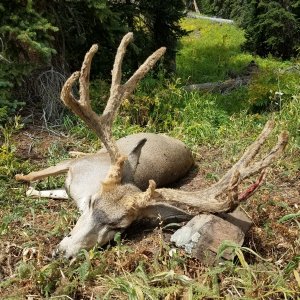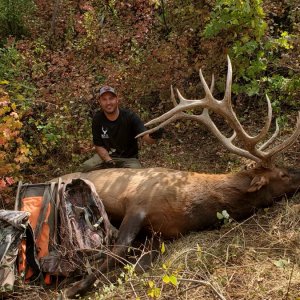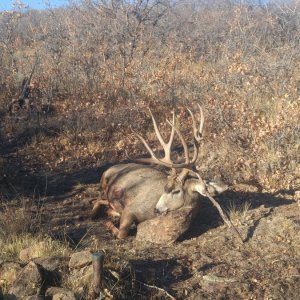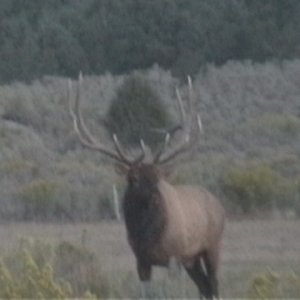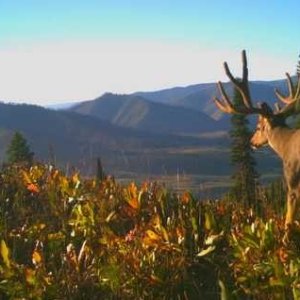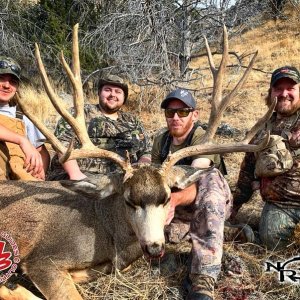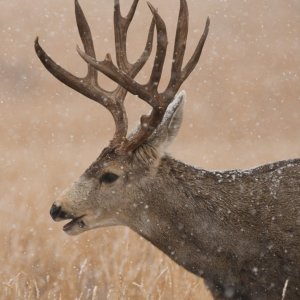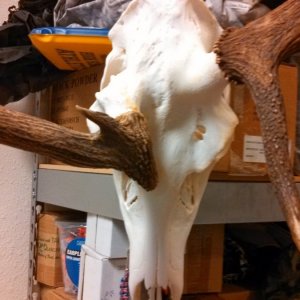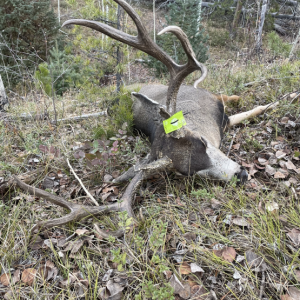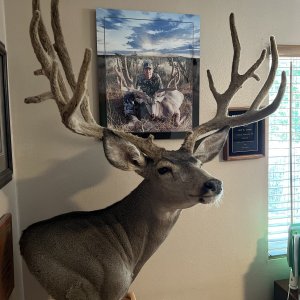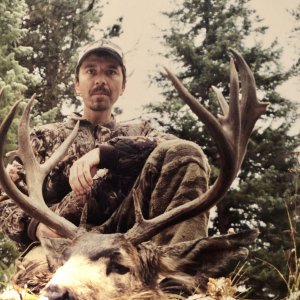You are using an out of date browser. It may not display this or other websites correctly.
You should upgrade or use an alternative browser.
You should upgrade or use an alternative browser.
PRONGS
- Thread starter JFWRC
- Start date
Phantom Hunter
Very Active Member
- Messages
- 2,150
great prongs-great buck
Phantom Hunter
Phantom Hunter
N
NMHUNTNUTT1
Guest
No picture to post but MAN, I wished I had plucked a speeder tag! Killin me....
K
ktc
Guest
Very nice PRONGS. JFW, what system do you use to judge PRONGS like that?
D
D13er
Guest
S.W.A.G.
JB
JB
H
huntin100
Guest
Thanks for the picture! Big prongs indeed! Big goat. Getting excited for Arizona and Wyoming speed goat hunting this fall!
P
pcha
Guest
LAST EDITED ON Jul-10-07 AT 03:55PM (MST)[p]Here is a picture of a little guy that I got up close and personal
to. I hope it works this is my first post. My brother in law told me I should check out this website so I finally did.

Here is one that is a little bit better.

to. I hope it works this is my first post. My brother in law told me I should check out this website so I finally did.

Here is one that is a little bit better.

AWHOLELOTTABULL
Long Time Member
- Messages
- 4,357
Hard to tell how far above the ears those prongs are but they would definately make you take a closer look at that buck. You don't happen to have the GPS coordinates to that buck do you? No asking much. It just has to be in either unit 50 or 61.
It's always an adventure!!!
It's always an adventure!!!
AWHOLELOTTABULL
Long Time Member
- Messages
- 4,357
pcha, that top pic is about as typical as a goat gets. That is really a beautiful animal i.e. ivory tips, nice inward curl, great mass and prongs and georgeous pelt. Nic pics.
It's always an adventure!!!
It's always an adventure!!!
K
ktc
Guest
It's 61 AWLB.;-) Well...50 maybe?;-)
I agree, nice photos. Thanks for putting them up!
AWLB, how far above the ears do you want the prongs? I am kind of a goat-tard.
I agree, nice photos. Thanks for putting them up!
AWLB, how far above the ears do you want the prongs? I am kind of a goat-tard.
AWHOLELOTTABULL
Long Time Member
- Messages
- 4,357
Average ear length on goats is said to be aroun 7 inches. I've always used the rule as long as they are above the ears. Most prongs I've seen are not above the ears that much. That's just one of the things to look at. Mass is a huge factor in getting a buck that scores good. That second picture above is a great buck. Prongs above the ears and about 4 fingers width, great length, definate shooter.
It's always an adventure!!!
It's always an adventure!!!
P
pcha
Guest
Sorry it took so long to get back to you. Both Antelope are in NM unit 38. I don't know the GPS coordinates but if you come set in my living room he comes by about once a week. I got a few pictures of him from the house but I decided I would like to try to get a little closer to see if I could make out the little extras on his horns. You can't see them from this angle.
Thanks for the compliments about the pictures.
Thanks for the compliments about the pictures.
PCHA
Nice pictures. I believe that 2nd goat with the girls will go mid 80's. He is bigger than the 2 goats on Cabela's TV Outfitter Journal Monday this week that were killed in the same area. Also, bigger than the picture at the top of the page. Those horns are 17 + inches. I'll let you know the exact score Sept. 14th or 15th when I put a tape to those horns. I no exactly where he runs. If I can figure out how to post some pics I'll post the 12 amigos that are running togather that I shot a pic of the other day.
Thanks for the great pics.
Nice pictures. I believe that 2nd goat with the girls will go mid 80's. He is bigger than the 2 goats on Cabela's TV Outfitter Journal Monday this week that were killed in the same area. Also, bigger than the picture at the top of the page. Those horns are 17 + inches. I'll let you know the exact score Sept. 14th or 15th when I put a tape to those horns. I no exactly where he runs. If I can figure out how to post some pics I'll post the 12 amigos that are running togather that I shot a pic of the other day.
Thanks for the great pics.
P
pcha
Guest
Stay out of my backyard LCHC LOL. Yea I saw the outfitter journal show with the two goats killed in central New Mexico, this buck is bigger.
N
NMHUNTNUTT1
Guest
pcha , you live in 38?
P
pcha
Guest
Yes I live smack dab in the middle of 38. Pretty good hunting ground.
How do you upload pics to this site. I'll post some pics that will make you mouth water. Also, you caught the Cabela's show on NM antelope Monday. What did you think of that show? The 2nd goat looked bigger then the first but they said the first one was 82" and second one 81". Wonder if those guys used the same tape measure. That second goat looked to have 17" up top and great prongs.
P
pcha
Guest
LAST EDITED ON Jul-11-07 AT 03:05PM (MST)[p]Yea I thought the second antelope was bigger myself. I may be a little biased because that goat came from the ranch that neighbors me and I got to see him a couple of times with my brother.
To upload pictures just follow the direction above where you post the message. (Where it says Click here to upload your photo and browse to find it on your puter and then hit upload.
I forgot to tell you that you then copy the http and paste in this section. They have to be 300 Kbyte or less.
To upload pictures just follow the direction above where you post the message. (Where it says Click here to upload your photo and browse to find it on your puter and then hit upload.
I forgot to tell you that you then copy the http and paste in this section. They have to be 300 Kbyte or less.
K
ktc
Guest
LCHC,
That is just wrong buddy!;-) Very nice!
What do you guys guess the third picture down, goat on the right scores? 82-85? That is a guess from a goat-tard.;-)
That is just wrong buddy!;-) Very nice!
What do you guys guess the third picture down, goat on the right scores? 82-85? That is a guess from a goat-tard.;-)
K
ktc
Guest
LCHC,
I just had my buddy tell me 7" on the ears.
I just had my buddy tell me 7" on the ears.
P
pcha
Guest
LAST EDITED ON Jul-11-07 AT 04:53PM (MST)[p]LAST EDITED ON Jul-11-07 AT 04:36 PM (MST)
LCHC As stated above average ear length is about 7 inches. The real narrow buck second from the left in the first picture is 17+ IMO. I would like to get a closer view to see where his ears stop (I guess this is where I would pull out the spotting scope). Those are some neat pictures when and where did they come from. There were a boat load full of bucks in that first picture.
KTC I would have to guess 83 or 84 maybe this is another goat that LCHC will get a tape on as he indicated about that one that I posted.
Nice Mule deer if that was early in antler development.
LCHC As stated above average ear length is about 7 inches. The real narrow buck second from the left in the first picture is 17+ IMO. I would like to get a closer view to see where his ears stop (I guess this is where I would pull out the spotting scope). Those are some neat pictures when and where did they come from. There were a boat load full of bucks in that first picture.
KTC I would have to guess 83 or 84 maybe this is another goat that LCHC will get a tape on as he indicated about that one that I posted.
Nice Mule deer if that was early in antler development.
PCHA
Here's a closer shot of that first goat. Also, a side view. What would he score? As far as area I can't give you my stomping grounds. I didn't get a lope tag this year so I can't chase these guys. I can take pics. I did luck out and get to chase bulls in Sept. with my brother and sorry brother-in-law. Also, me and my brother hit 2C mule deer in Jan.


Here's a closer shot of that first goat. Also, a side view. What would he score? As far as area I can't give you my stomping grounds. I didn't get a lope tag this year so I can't chase these guys. I can take pics. I did luck out and get to chase bulls in Sept. with my brother and sorry brother-in-law. Also, me and my brother hit 2C mule deer in Jan.


P
pcha
Guest
LCHC, Now I am not as sure about 17+ as I was. With the sweeping curl he may still be pushing 17. He gives up alot in mass and prong but I would still be saying shoot to my bro. to get him on the ground to see if he goes 17. then I would go shoot the one KTC is talking about above.
My guess 75 BC.
Any other opinions.
My guess 75 BC.
Any other opinions.
K
ktc
Guest
Eel,
This is what we hope for! Great looking bucks that have been posted. Thanks guys!
This is what we hope for! Great looking bucks that have been posted. Thanks guys!
B
Bulzeye
Guest
Here's a nice buck I got pic's of a few weeks ago.




K
ktc
Guest
Very nice Bul!
I am guessing 82-83? How is my guess guys?
I am guessing 82-83? How is my guess guys?
P
pcha
Guest
Man! that is another real good antelope. My guess is he is pushing 80. Man if he curled over it would add some more to an already impressive length. Thanks for the picture.
H
huntin100
Guest
Nice goat. I would think he was around 16 inches. Prong is a little low. Medium mass. medium prong, Thinking around 80 inches.
I thought I'd add some controversy to this post! I have been hunting antelope since I was old enough to hold a rifle and still seem to get fooled from time to time judging them! One thing I've learned through the years for both deer and antelope is not to use body parts to come up with measurements. Each animal usually has a little different body comfirmation and this can change depending upon what angle you are viewing them and which way their head is turned (upright, side view, etc)! Obviously it is very important to get different views and angles of a buck before shooting him!
As an example, if you look at the antelope photos posted above just about every one of the bucks in the photo's ears are cocked somewhat backwards. You may not be able to pick this up from the front view but will likely see this from the side. If you are below or above a buck it will also make the ears look longer or shorter. I haven't really been a fan of using ears, eyes, length of nose for field judging...more times than not this has lead to ground shrinkage!
I put a tape on a bunch of my antelope mounts. Just about every one of my bucks has 4 1/2" ears from the tip to the where the ear attached to the inside crown of the skull. The outside of the ear where it connected (about even with the eye) was close to 6". My tape stretched to 7" if I add on the additional ear parts that are attached along the neck. The 7" measurement would be nearly impossible to see from a distance or any view unless you were at point-blank range. I'm not sure if NMex antelope have longer ears than Wyo antelope but that may be something to consider if you are set on using ears to estimate scores.
One thing I have always used for scoring antelope is visualizing a dollar bill. A dollar is exactly 6" in length. If you look at the giant pronged buck in the first photo you can definitely tell his prongs are well over a dollar bill in length!
One thing you may also want to remember is that overall horn length is only a fraction of the score compared to mass measurements! A lot of guys seem to get caught up in horn length! Obviously it takes pretty much everything to make a B&C buck! Different parts of the country usually have particular horn confirmations for bucks that qualify for B&C. If you are familiar with these particular measurements it will definitely help make your selection of bucks a little easier (if you are searching for B&C!). This same thing often holds true for deer, elk, moose, mtn goat, bighorns, etc!
As an example, if you look at the antelope photos posted above just about every one of the bucks in the photo's ears are cocked somewhat backwards. You may not be able to pick this up from the front view but will likely see this from the side. If you are below or above a buck it will also make the ears look longer or shorter. I haven't really been a fan of using ears, eyes, length of nose for field judging...more times than not this has lead to ground shrinkage!
I put a tape on a bunch of my antelope mounts. Just about every one of my bucks has 4 1/2" ears from the tip to the where the ear attached to the inside crown of the skull. The outside of the ear where it connected (about even with the eye) was close to 6". My tape stretched to 7" if I add on the additional ear parts that are attached along the neck. The 7" measurement would be nearly impossible to see from a distance or any view unless you were at point-blank range. I'm not sure if NMex antelope have longer ears than Wyo antelope but that may be something to consider if you are set on using ears to estimate scores.
One thing I have always used for scoring antelope is visualizing a dollar bill. A dollar is exactly 6" in length. If you look at the giant pronged buck in the first photo you can definitely tell his prongs are well over a dollar bill in length!
One thing you may also want to remember is that overall horn length is only a fraction of the score compared to mass measurements! A lot of guys seem to get caught up in horn length! Obviously it takes pretty much everything to make a B&C buck! Different parts of the country usually have particular horn confirmations for bucks that qualify for B&C. If you are familiar with these particular measurements it will definitely help make your selection of bucks a little easier (if you are searching for B&C!). This same thing often holds true for deer, elk, moose, mtn goat, bighorns, etc!
EliAGrimmett
Active Member
- Messages
- 157
pcha - the reason you're not as sure about 17+ as you originally stated is because those pictures are not of the same buck. Right horn is higher in first picture - left horn is higher in second.
H
huntin100
Guest
Elia, the back ground looks the same? What do you think the last buck would score? I hace watched your Dads great DVD at least 10 times. Great DVD. Thanks, Greg
EliAGrimmett
Active Member
- Messages
- 157
LCHC - Thanks. I kinda think the third buck from the right might be the same buck, though. Hard to tell from the tiny pic, but the side view is similar.
I think the buck posted by Bulzeye is around 87. I posted an earlier score on AZOD of a little bigger than that, but I think I was being too optimistic.
I think the buck posted by Bulzeye is around 87. I posted an earlier score on AZOD of a little bigger than that, but I think I was being too optimistic.
P
pcha
Guest
LAST EDITED ON Jul-13-07 AT 09:50AM (MST)[p]LAST EDITED ON Jul-13-07 AT 09:46 AM (MST)
Nice LCHC here I thought I was going crazy getting an up close look at that one I thought would go 17+ and it was a different goat lol. I didn't even look at anything but those horns. If I would have studied the picture harder I might have figured it out. Sooo, I go back to I still think he is 17+.
I agree with the above post I never said the buck I called 17+ would score that well. I really can't tell about all the other factors, but with that in mind there are alot of hunters out there that are just looking for length and would like to put a 17+ on the wall just like mule deer hunters wanting a 30 inch buck. Mass X 4 measurements per horn can do much more for a score than can length.
The real picture was posted while I was responding.
Nice LCHC here I thought I was going crazy getting an up close look at that one I thought would go 17+ and it was a different goat lol. I didn't even look at anything but those horns. If I would have studied the picture harder I might have figured it out. Sooo, I go back to I still think he is 17+.
I agree with the above post I never said the buck I called 17+ would score that well. I really can't tell about all the other factors, but with that in mind there are alot of hunters out there that are just looking for length and would like to put a 17+ on the wall just like mule deer hunters wanting a 30 inch buck. Mass X 4 measurements per horn can do much more for a score than can length.
The real picture was posted while I was responding.
A
AZBoy
Guest
LAST EDITED ON Jul-15-07 AT 09:40AM (MST)[p]LAST EDITED ON Jul-15-07 AT 09:07?AM (MST)
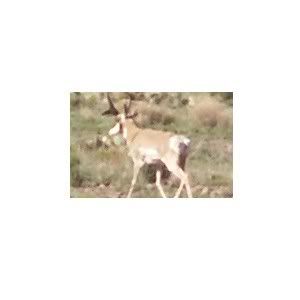
I know this is a bad picture ......but we watched this buck for months before my wifes hunt.We had named him long pron. He had better than 7 inch cutters I was guessing........he disappeared on us the week before the hunt.
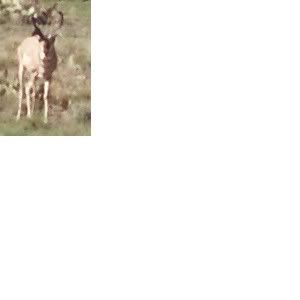
another picture of long pron from the front
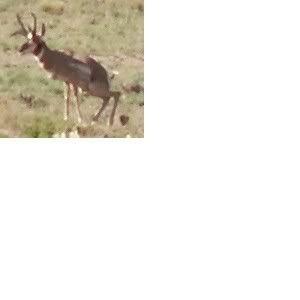
This picture makes him look spindly, but he was anything butt.
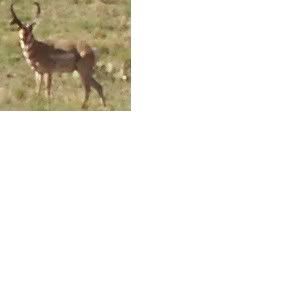

I know this is a bad picture ......but we watched this buck for months before my wifes hunt.We had named him long pron. He had better than 7 inch cutters I was guessing........he disappeared on us the week before the hunt.

another picture of long pron from the front

This picture makes him look spindly, but he was anything butt.

A
AZBoy
Guest
LAST EDITED ON Jul-15-07 AT 01:02PM (MST)[p]LAST EDITED ON Jul-15-07 AT 12:33?PM (MST)
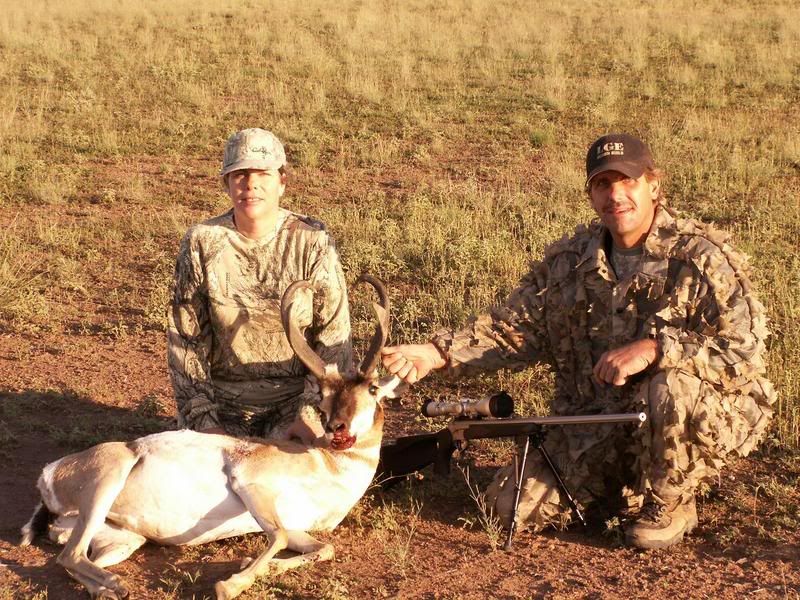
This
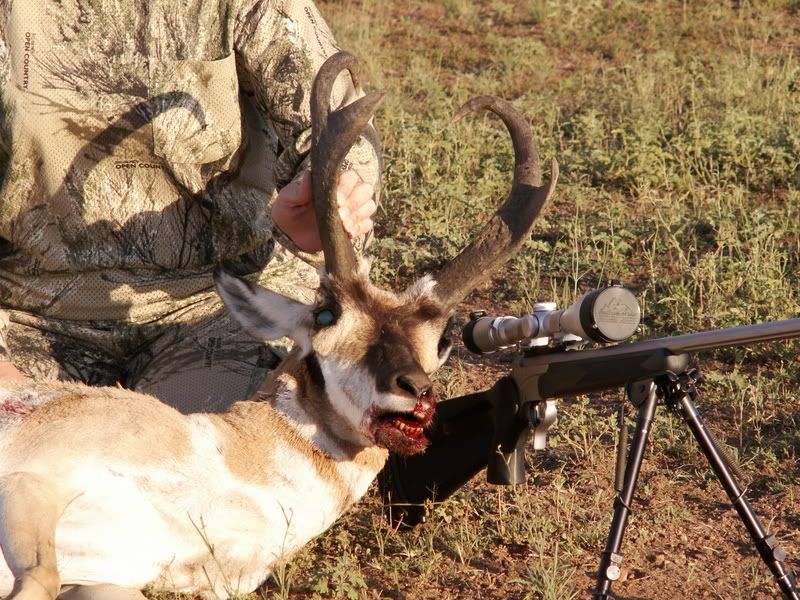
is the buck my wife ended up taking..........we called it #2

This

is the buck my wife ended up taking..........we called it #2
A
AZBoy
Guest
Heres 1 my brother took the year before my wifes hunt in the same unit

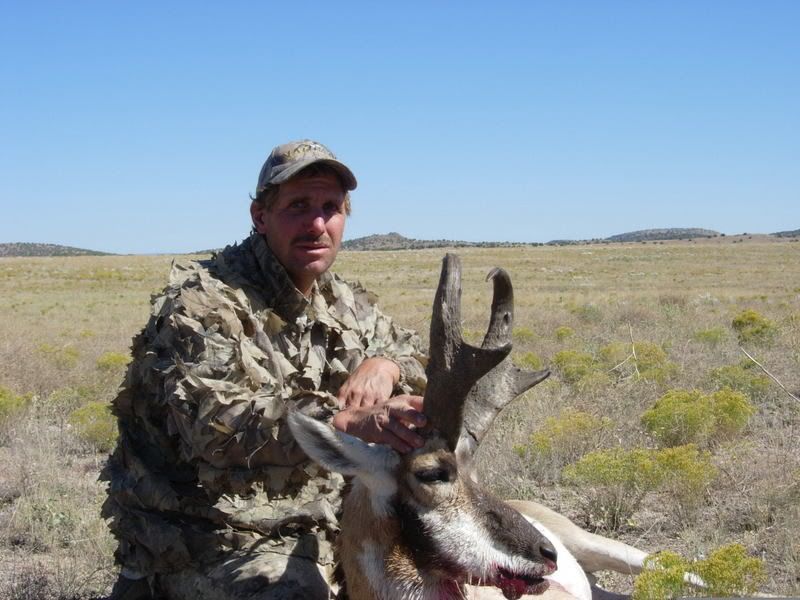


EliAGrimmett
Active Member
- Messages
- 157
To prong: 7
Past prong: 10 2
Prong off horn: 3 2
Behind prong: 2 4
Length: 17 2
Prong: 5 6
Base: 6 6
1st: 6 7
2nd: 4 1
3rd: 3
Total: 87 4
His lack of hook does make him look tall, but that doesn't mean that he isn't.
Past prong: 10 2
Prong off horn: 3 2
Behind prong: 2 4
Length: 17 2
Prong: 5 6
Base: 6 6
1st: 6 7
2nd: 4 1
3rd: 3
Total: 87 4
His lack of hook does make him look tall, but that doesn't mean that he isn't.
EliAGrimmett
Active Member
- Messages
- 157
AZBoy: What did your wife's buck end up scoring? I think we may have video of that buck. We also have a lot of video of your other buck with the giant prongs! No telling where he's at now.
LCHC/pcha:

How far apart do these two bucks live? If they're right next to each other it looks like the area has some good genetics!
And, back to the original topic - prongs! I think this buck has some big prongs...

LCHC/pcha:
How far apart do these two bucks live? If they're right next to each other it looks like the area has some good genetics!
And, back to the original topic - prongs! I think this buck has some big prongs...
P
pcha
Guest
LAST EDITED ON Jul-20-07 AT 02:29PM (MST)[p]Elia,
That buck does have some great prongs. What will they go about 6.5 7 inches kinda hard to tell from the angle, but super prongs anyway.
I believe all of those bucks are on the same ranch. I think that LCHC is looking at the same antelope that are on the ranch that neighbors me. At least those pictures he posted look alot like the antelope that I have seen. Maybe LCHC can confirm it. The antelope quality in this area is really on the up swing.
That buck does have some great prongs. What will they go about 6.5 7 inches kinda hard to tell from the angle, but super prongs anyway.
I believe all of those bucks are on the same ranch. I think that LCHC is looking at the same antelope that are on the ranch that neighbors me. At least those pictures he posted look alot like the antelope that I have seen. Maybe LCHC can confirm it. The antelope quality in this area is really on the up swing.
EliAGrimmett
Active Member
- Messages
- 157
Yeah, those prongs are probably 7 inches.
LCHC is looking at the same bucks from what I can see. Do either of you have a tag of any kind for that area?
LCHC is looking at the same bucks from what I can see. Do either of you have a tag of any kind for that area?
P
pcha
Guest
Elia,
I didn't draw for antelope this year. I have only drawn once in 5 years. I will probably guide some guys in this unit on different ranches then those antelope are on. Still some pretty good quality animals where I will be.
I didn't draw for antelope this year. I have only drawn once in 5 years. I will probably guide some guys in this unit on different ranches then those antelope are on. Still some pretty good quality animals where I will be.
A
AZBoy
Guest
Eli
My wife's buck was right at 80". It was her first hunt in 10 years, what a great time that was. Long prong was hanging close to the junipers we figured he was pressured deeper into them. I did see a photo in a magazine some time later where an auction tag holder killed an Arizona antelope that looked just like long prong but I couldnt be sure it was.
AZBoy
My wife's buck was right at 80". It was her first hunt in 10 years, what a great time that was. Long prong was hanging close to the junipers we figured he was pressured deeper into them. I did see a photo in a magazine some time later where an auction tag holder killed an Arizona antelope that looked just like long prong but I couldnt be sure it was.
AZBoy
EliAGrimmett
Active Member
- Messages
- 157
Well, I know that the two auction tag bucks that were taken last year were not that buck. Although, I don't know what the raffle tag hunter killed, if anything. I was under the impression that the raffle tag hunter hadn't killed yet, but I'm not sure. Congrats to you and your wife - great buck, perfect heart!
B
Big10AZ
Guest
I was assigned to ranch #18740 Escondida Land & Cattle near Deming.
Anyone know anything about this ranch?
Anyone know anything about this ranch?
EliAGrimmett
Active Member
- Messages
- 157
Just thought I'd post an update to the buck that Bulzeye posted the pictures of a while back...it was taken by Bill Dunbar (one of two auction tag winners in Arizona) and I've been told that it scores 88 2/8. Not sure if that's gross or net, but it looks pretty symmetrical.
B
Bulzeye
Guest
Don't I get one of those 10K finders fees or something like that? 
Congrats to the hunter! That was really one of the prettiest shaped bucks I've ever seen. Every feature was really in proportion to the others. He's going to look good on someone's wall.
Eli, post the measurements when you get them... Please?
Congrats to the hunter! That was really one of the prettiest shaped bucks I've ever seen. Every feature was really in proportion to the others. He's going to look good on someone's wall.
Eli, post the measurements when you get them... Please?
EliAGrimmett
Active Member
- Messages
- 157
Only measurement I got was that the horns were 17 2/8 long and that the score was an SCI score and that the buck would have had 3/8 deduct from side to side for B&C.
M
Muley62
Guest
LAST EDITED ON Aug-30-07 AT 09:32AM (MST)[p]LAST EDITED ON Aug-30-07 AT 09:31?AM (MST)
LAST EDITED ON Aug-30-07 AT 09:27?AM (MST)
LAST EDITED ON Aug-30-07 AT 09:27?AM (MST)
Eli
What are you doing on the computer this time of year?
Here is one from NM last week. I rarely see prongs this good in the northern part of the state.
http://www.monstermuleys.info/dcforum/User_files/46d6e2a3603a86e0
I GIVE UP!!!!!
Why cant i post a picture????????
LAST EDITED ON Aug-30-07 AT 09:27?AM (MST)
LAST EDITED ON Aug-30-07 AT 09:27?AM (MST)
Eli
What are you doing on the computer this time of year?
Here is one from NM last week. I rarely see prongs this good in the northern part of the state.
http://www.monstermuleys.info/dcforum/User_files/46d6e2a3603a86e0
I GIVE UP!!!!!
Why cant i post a picture????????
EliAGrimmett
Active Member
- Messages
- 157
I'm only gonna be in town for a couple more days and then I'm gone for another couple weeks. Send that pic to my email (or my dad's), I wanna see big prongs!
Hey, any idea what last years super raffle hunter took? He's done by now for sure, but I haven't seen any pictures on the website.
Hey, any idea what last years super raffle hunter took? He's done by now for sure, but I haven't seen any pictures on the website.
J
jaybob
Guest
Here's 1 I'm hoping to connect on. Probablly doesn't score anything, but kinda unique.


M
Muley62
Guest
Eli
I sent the picture, one of these days I will figure this out!
I have not heard how last years super raffle hunter did. I met him at this years drawing, in fact we had him draw the winner. When Pete gets back he will probably know.
Chris
I sent the picture, one of these days I will figure this out!
I have not heard how last years super raffle hunter did. I met him at this years drawing, in fact we had him draw the winner. When Pete gets back he will probably know.
Chris
AZBoy,
In reference to your post #43 above and picture #3 that prong looks very close to 7-8". I was just reading an article that a Mr. Jay Lesser did for Fair Chase back in 2003 and he stated that the "distance from the front edge of the horn to the end of the nose, that this distance will average eight (8) inches".
Also that the measurement from the center of the base to the tip should be about 6".
The one measurement that throws me is this, "the circumference measurements of the horn can be estimated by using the animals (four-inch eye circumference). Aren't the eye's about 2" wide??
Got a first time lope hunt coming up in a week and trying to get all of these "quick measurements" implanted in this old brain of mind. LOL
Brian
In reference to your post #43 above and picture #3 that prong looks very close to 7-8". I was just reading an article that a Mr. Jay Lesser did for Fair Chase back in 2003 and he stated that the "distance from the front edge of the horn to the end of the nose, that this distance will average eight (8) inches".
Also that the measurement from the center of the base to the tip should be about 6".
The one measurement that throws me is this, "the circumference measurements of the horn can be estimated by using the animals (four-inch eye circumference). Aren't the eye's about 2" wide??
Got a first time lope hunt coming up in a week and trying to get all of these "quick measurements" implanted in this old brain of mind. LOL
Brian









